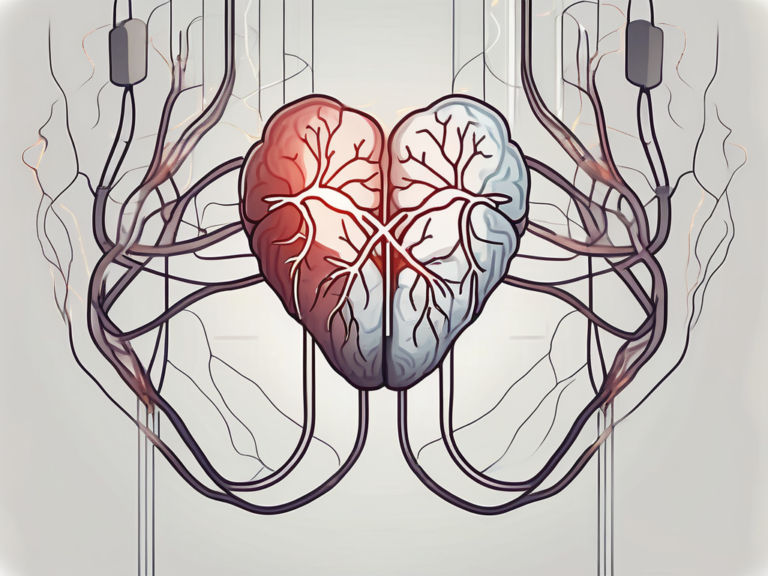I Will Give You a New Heart: Discover the Revolutionary Advances in Cardiac Transplants
Are you ready for a heart-pumping journey into the world of cardiac transplants? Buckle up and prepare to be amazed by the groundbreaking advancements that have revolutionized the field of cardiovascular medicine. In this article, we will take a fascinating dive into the basics of cardiac transplants, explore the evolution of surgical techniques, delve into the role of technology, ponder the future possibilities, and grapple with the ethical considerations surrounding this life-saving procedure. So, grab a stethoscope, because we’re about to uncover the heart of the matter!
Understanding the Basics of Cardiac Transplants
Before we embark on this incredible voyage, let’s take a moment to familiarize ourselves with the fundamental concepts of cardiac transplants. To begin, it’s crucial to understand the intricate anatomy of the heart. This vital organ consists of four chambers—the left and right atria, and the left and right ventricles—which work tirelessly to pump oxygen-rich blood throughout the body.
Now, let’s journey back in time to discover the history of heart transplants. It all started with the courageous and pioneering efforts of Dr. Christiaan Barnard, who performed the world’s first successful heart transplant in 1967. Since then, countless lives have been saved and transformed by this extraordinary medical breakthrough.
As we delve deeper into the realm of cardiac transplants, it is important to understand the intricate process involved in this life-saving procedure. A cardiac transplant is a complex surgical procedure that involves the removal of a diseased or damaged heart and replacing it with a healthy donor heart. This intricate operation requires a highly skilled surgical team, including cardiac surgeons, anesthesiologists, and transplant coordinators, who work together to ensure the success of the transplant.
One of the most critical aspects of a cardiac transplant is the donor heart selection process. The donor heart must be a suitable match for the recipient in terms of blood type, size, and tissue compatibility. This meticulous matching process is essential to minimize the risk of rejection and increase the chances of a successful transplant.
After the transplant surgery, the recipient enters a crucial phase of recovery and rehabilitation. This period involves close monitoring, medication management, and lifestyle adjustments to ensure the long-term success of the transplant. Cardiac rehabilitation programs play a vital role in helping recipients regain their strength, improve their cardiovascular health, and adapt to their new lease on life.
In conclusion, cardiac transplants are a remarkable medical advancement that has revolutionized the field of cardiovascular medicine. Understanding the anatomy of the heart, the history of heart transplants, and the intricate process involved in this procedure provides a solid foundation for appreciating the incredible impact it has on countless lives. As we continue our journey, let’s explore the fascinating world of cardiac transplants and the remarkable stories of resilience and hope that accompany them.
The Evolution of Cardiac Transplant Techniques
Much like the heart itself, cardiac transplant techniques have undergone a remarkable evolution over the years. In the early days, surgeons faced numerous challenges and limitations. However, their perseverance paved the way for modern techniques, which have revolutionized the field.
Today, surgeons employ sophisticated advancements that have significantly increased the success rates of cardiac transplants. These cutting-edge techniques allow for a more seamless integration of the transplanted heart into the recipient’s body, promoting long-term viability and improved quality of life.
One of the key advancements in cardiac transplant techniques is the development of immunosuppressive medications. These medications help prevent the recipient’s immune system from rejecting the transplanted heart. In the early days of cardiac transplantation, the lack of effective immunosuppressive drugs posed a significant challenge. Rejection episodes were common, and many patients struggled to maintain the health of their transplanted hearts.
However, with the advent of powerful immunosuppressive medications, such as cyclosporine and tacrolimus, the rates of rejection have significantly decreased. These medications work by suppressing the immune system’s response to the transplanted heart, allowing it to function without interference. As a result, patients can enjoy a longer lifespan with their new hearts, free from the constant threat of rejection.
The Role of Technology in Cardiac Transplants
Technology has played a monumental role in advancing the field of cardiac transplants. With each passing day, new innovations emerge, enhancing surgical precision and patient outcomes. One such innovation is the use of robotic-assisted surgery, where surgeons can perform intricate procedures with enhanced dexterity and accuracy.
Furthermore, the impact of imaging technology cannot be overstated. Through the use of advanced imaging techniques, such as magnetic resonance imaging (MRI) and computed tomography (CT) scans, medical professionals can gather detailed information about a patient’s heart, enabling them to make important decisions regarding transplantation eligibility and treatment plans.
The Future of Cardiac Transplants
Looking ahead, the future of cardiac transplants is brimming with excitement and potential. One area of exploration that holds immense promise is the use of stem cells and regenerative medicine. Scientists are actively researching ways to harness the regenerative capabilities of stem cells to repair damaged heart tissue, potentially eliminating the need for transplants altogether.
Another fascinating avenue being pursued is the integration of 3D printing technology. Imagine a world where customized, biocompatible hearts can be fabricated using a patient’s own cells. This revolutionary approach could revolutionize the field, overcoming the limitations associated with organ shortages and reducing the risk of rejection.
The Challenges and Ethical Considerations in Cardiac Transplants
No journey would be complete without acknowledging the hurdles and ethical dilemmas that exist within the realm of cardiac transplants. An acute shortage of organs remains a significant challenge, leaving many deserving patients waiting anxiously for a life-saving opportunity.
Alongside the issue of organ shortage, ethical considerations loom large. Determining who should receive scarce resources and prioritizing patients in need pose complex ethical dilemmas. Striking a balance between fairness and maximizing potential outcomes is an ongoing struggle for healthcare professionals.
As we come to the end of this exhilarating expedition into the world of cardiac transplants, we can’t help but marvel at the remarkable strides that have been made. The field continues to evolve at an extraordinary pace, pushing the boundaries of what was once thought impossible. So, whether you find yourself in awe of the anatomy, captivated by the history, fascinated by the technology, hopeful for the future, or grappling with the ethical considerations, one thing is certain—cardiac transplants have forever changed the human heart, offering a second chance at life that is truly extraordinary.






